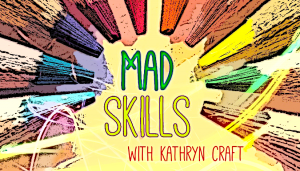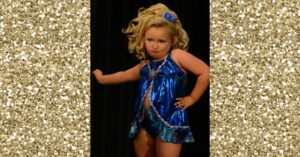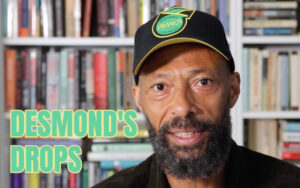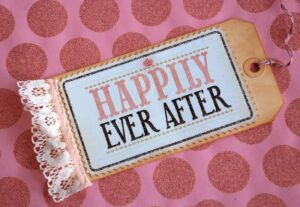Process
A while back I wrote a post on how I use the binder in Scrivener to delineate a scene’s geographic location, POV character, location in the manuscript, and more. Because it spawned useful discussion, I thought to share another procedural trick that I find essential.
I use it at least two or three times per manuscript, when I’ve resolved the bigger story questions and am polishing at the sentence or paragraph level. Inevitably, I’ll reach a lengthy passage of important activity and know most of the ingredients are already there, but there’s something off about their action-reaction sequence.
Alternatively, I need to delete something/work in something additional, and the alterations are throwing off the current passage’s rhythm or tone.
In my case, this typically happens in dialogue-heavy scenes where the existing passage contains the right pacing or liveliness, so while I’m making my changes, I’d love to preserve the original chemistry and flow.
Before I discovered the Bread Machine Editing Process™ (title explanation to follow), I tried a number of other solutions. I’ll mention them here because they have their place in a self-editor’s toolbox.
Potential Self-Editing Procedures
One option is to simply save the original passage and open a subdocument, cutting and pasting to rework the difficult portion until I am satisfied.
But if I’m dealing with a section that extends beyond a page or so, my brain has a hard time juggling all the potential action-reaction sequences. To pin them down, I might end up creating four or five slightly different subdocuments, in the process giving myself a raging headache.
Another choice is to reduce the passage to a sequence of named beats and simply move the beat titles around—on paper or computer—until their order makes sense.
Sometimes this works for me. But more often than not, when I replace the beat name with the text it’s meant to represent, I discover the prose’s magic has been lost.
On occasion, paper and printer have rescued me. I’ll print out the passage, cut it into the chunks of prose that must stay affixed to one another, and rearrange until satisfied. This makes it easy to remove specific sentences altogether, or add a scrap of paper with new content to assist with logic or flow. Under ideal circumstances, this definitely works.
But what if you don’t have access to the necessary stationery supplies or a large enough surface to see the whole sequence you’re working on? (For example, you’re traveling or writing in a coffee shop.)
What if you’re working outdoors, where a breeze constantly threatens to rearrange your paper slips? Or indoors, with two cats who like to swagger across your working surface, and a black lab who takes personal affront at their arrogance?
What if you need to insert bridging text, and your handwriting can’t keep pace with your ideas?
This is where the Bread Machine Editing Trick™ can prove handy, as it basically is a digital mimic of the paper and printer technique. (I’ve nicknamed it the BMET because, if you’ve ever owned one of those appliances, you’ll recall their emphasis on adding the ingredients in the correct order. Add the dry ingredients before the wet, for example, and expect to extract a hockey puck rather than a loaf with the perfect crumb.)
The BMET’s […]
Read MoreSince the last time we spoke, I drafted another book.
Before you applaud, like the title of this post says, it is a zero draft, so it is very, very far from something fit for human consumption. As for what the heck “zero draft” even means, and how I did it in six weeks, read on:
What is a zero draft?
Like the name implies, the zero draft is a sort of pre-first draft. It is the draft before the Draft. Sometimes it can feel like we writers have mythologized the first draft by trying so hard to un-mythologize it. “Get it all down,” “You can’t outsmart the first draft,” “Close the door,” “Write for yourself,” “Give yourself permission to suck”—I get the intent, but I’ve found myself in the midst of first drafts wondering if I’m not caring hard enough. As I write, there’s a voice in the back of my mind asking, Am I still caring too much? Can I not care even more? Please, tell me how to care less about my book.
The thing is: I do care. I can’t not care about how my drafts sound. I recognize that rewriting is an inevitability, perfection is an illusion, and first drafts are always the worst, and yet—
I like the process of writing. I care less about having written. I like crafting prose, making sentences sing, and finding the exact right word for the feeling I’m trying to express. I’m not unique in that—I’m sure most of us like this part!—but I’ve finally accepted that I am unable to turn that part of my brain off to write a bad first draft.
But, of course, books are fickle things. Crafting prose takes a lot of time. There’s nothing quite as soul-crushing as spending a full day perfecting the flow of one paragraph only to have to scrap the whole thing in the next draft because that part of the book became irrelevant.
I recognized that I needed a middle ground, something that could trigger that part of my brain that said, “It’s ok to suck here. It’s ok to figure out what the heck’s going on in this book before you ever try to write a nice-sounding sentence.”
Enter: zero drafting.
Finally, a definition.
Zero drafting is the barest bones of a draft. It is a several steps more detailed than an outline, but less fleshed out than a first draft. There’s no set length for it: I’ve seen anywhere from 10 pages to 30,000 words recommended for zero drafting. Mine ended up being about 10,000 words. The right length for your zero draft is entirely what works best for you.
In short, in my version of zero drafting, I took my outline (more on that in a moment) and turned it into scenes, using simple language to describe what happens in each scene. It is stage directions with hardly any dialogue.
Here’s an example from the zero draft of the book:
Someone jerks his head toward the monsters, impatient.
Brigid makes a threatening gesture. Calm the hell down.
The monsters gather and begin to feed. Others in the gang wince and retch. Brigid doesn’t.
She gestures for them to attack.
She takes the lead and shows herself an expert fighter. Her team works well together, and they take […]
Read MoreEvery story is told from a point of view (POV). Who is telling the story determines the story that can be told, because it determines what the reader can know about actions, characters, events, thoughts, and motivations. The more limited the viewpoint, the more limited the reader’s access to information and the more personalized that information is. The more diffuse the viewpoint, the more comprehensive the reader’s access to information, but also the less personalized that information is. If you want to write a sweeping historical saga, a close first person viewpoint might not be the easiest. If you want to write an intimate story of personal transformation, distant third person will make your work harder.
What POV should your story be in? If the story is told through more than one character’s viewpoint, which character should be telling which scenes? Asking these simple questions can provide a strategy for editing and refining as well as drafting a story.
I am revising a work in progress from distant third person to close third person POV. I’ve already written a post about how writing in closer third person breathed more life into the characters and how that changed the story. In my revisions, I also discovered that sometimes the problems with a chapter or a scene stemmed not from whether it was ‘close enough’ third person, but whether it was being told by the wrong character. I solved several of those problem scenes by rewriting them from a different character’s POV.
The first step in that revision was choosing which character should be telling the story or scene. Particularly for complex scenes with many characters and many interwoven plot details, the best POV character was not always obvious. Each knew pieces of the story puzzle, but not all; each was there for their own reason, but didn’t know why some of the others were there.
I developed two questions that helped me determine which character provides the best POV for a scene. One question is about the emotional impact of the scene, the other is about the information needed to understand the scene.
While it’s obvious that telling the scene through the most emotionally affected character keeps the stakes high, if that character can’t tell the reader the information necessary to understand what’s going on in the story, then the author has to find another way to impart that information. Those ‘other ways’ are often places where the writing breaks down. The necessary information is offered to the reader through head hopping (temporary shifts in POV), through often intrusive narrative or […]
Read More
Therese (Walsh) here to re-introduce you to former WU contributor Therese Fowler, who–happily for us–is returning to WU as a regular contributor! Therese will also join us as a community session leader at this year’s Writer Unboxed UnConference. Welcome back, Therese!
Greetings, all. It’s been a minute (as they say) since I’ve posted at WU, and I’m pleased to be rejoining the community. I’m known here as “the other Therese,” a label I wear happily.
To frame today’s subject matter, let me first give you a little background about me: I’ve been making my living as a novelist since 2007 and am now seven books into a career that’s had some wonderful highs (three NYT bestsellers and a TV-series adaptation, to name a few) as well as some crushing lows (my third novel, Exposure, was DOA in hardcover and sold so poorly that the publisher decided not to give it a paperback release). I’ve written women’s fiction, biographical-historical fiction, and general fiction, first with Ballantine Books, then with St. Martin’s Press. All of which is to say that I’ve been swinging my pickaxe at the rocks for a long time, now.
Here’s something I’ll bet you already know: for most of us mortals, writing a novel is hard. It’s damn hard, and it usually takes a long time, even if we’re able to work on it daily for hours at a stretch. Months of work. Years, sometimes. Maybe we’ve had rejections or disappointments with previous efforts, which makes choosing and writing a new novel even more challenging. How best to do it? This issue has been on my mind for a lot, lately, and came up in a conversation I had with Therese Prima—i.e. Therese Walsh—this spring. We are both currently “between books” and were discussing what it takes to make it through the long and arduous journey from premise to (ideally) publication.
As many writers do, I find story ideas everywhere I go and am forever making notes for later reference. Interesting people I’ve seen someplace form up as interesting possible characters. Interesting situations I witness become intriguing plot possibilities. When I am in between books, I feel itchy, unsettled. I need to know what’s next for me. So I’m perpetually exploring new story prospects—even to the point, sometimes, of drafting ten or twenty thousand words derived from the initial spark of interest, hoping for flames. In the process, I evaluate the prospects and try to determine whether they seem to be the “right” next book for me. And because I make my entire living from my novels, “right” has to take into account factors like publisher expectations, reader expectations, and career trajectory, as well as being sufficiently intriguing to me.
The course of my career has seen me writing from what’s felt like divine inspiration as well as from “Oh, shit, my deadline is looming, better come up with something soon.” I am capable of writing a publishable book from a place of what seems to be a “logical right choice” and have done so, but time has taught me that my best successes each arose from a place of real passion. Actually, more than passion: Obsession.
If you’ve experienced this, you know the feeling: […]
Read Morephoto adapted / Horia Varlan
Ah, the dreaded cliché. It sneaks into our writing with nary a noise, and yet is received by readers with a resounding clunk.
Most writers go to great lengths to avoid them.
In an interview with Oprah Winfrey, on whose wings Janet Fitch’s debut White Oleander found its well-deserved audience, Fitch said she approached her work like a poet, replacing any combination of words that she’d ever heard before. While this is more effort than many of us are willing to expend, it makes sense from a business perspective. Why should a publisher pay a wordsmith to regurgitate combinations so recognizable that readers are numb to them? We need to do the work of creative writers and come up with word clusters that will snag the reader’s interest and inspire fresh thought.
But to sidestep clichés at all costs is to miss out on a handy tool that’s available to all writers. After all, when we need to drive home a nail, will we refuse the hammer just because it is a simple and easily recognized tool? Consider the following arguments in support of the lowly cliché.
1. Clichés are true. Why else would they be overused? Even the claim that “fiction writers make things up to find out what is true” may now be a cliché, but it rings the bell of truth loud and clear. (“Loud and clear”—I’m on a roll!)
2. Clichés make a convenient placeholder while drafting. If your first draft lacks sparkle due to an overuse of clichés, this simply proves their ubiquity: finding clichés conveniently lined up on the nearest shelf, your mind made good use of them while laying down your story. This is smart. Further innovation at this point would impede the story as it flows from mind to virgin page.
The time to replace worn-out phrases with more evocative language is in later drafts, as Fitch did, when you’re sure that sentence is needed. If the cliché conveys just the right meaning, try refreshing it with a twist. As you would with any edited prose, demand that your twisted cliché create voice, deepen characterization, and/or further plot.
Here’s what Mark Z. Danielewski did to spiff up his prose in an excerpt from the cult classic, House of Leaves. My guess is that this exchange between his narrator and the woman he just met began with inspiration from the Supremes hit, “(Whenever You’re Near) I Hear a Symphony.” (And let’s face it—any song Motown produced in the 60s is probably a cliché today).
“Thank you,” I said, thinking I should kneel.
“Thank you,” she insisted.
Those were the next two words she ever said to me, and wow, I don’t know why but her voice went off in my head like a symphony. A great symphony. A sweet symphony. A great-f***ing-sweet symphony. I don’t know what I’m saying. I know absolutely sh*t about symphonies.
I don’t know whether Danielewski wrote this way from the get-go or if it was in revision that he waxed symphonic. But it was entertaining, right? Even out of context, this riff perfectly evokes the effect this woman has had on the protagonist.
3. Clichés provide a recognizable jumping off point […]
Read MoreFrom the Flickr of briantvogt, INFphoto.com.Ref: infusmi-20/21|sp
My last article, in March, addressed the process of finding and hiring a professional editor for a novel manuscript, comparing the insecurity this sparked as akin to entering one’s dolled-up toddler in a baby beauty contest. There might be harsh criticism and unflattering light. My metaphor was similar to one I’ve used to describe the sensation of having a novel launch into the world: It’s like pushing one’s naked toddler out into traffic to cross a busy intersection alone, while one can only watch what happens from the curb (and one is also naked). So, yeah. Anxiety is involved.
I promised an update in this installation, and I know that millions of you have been on the edge of your seats waiting to hear how it’s going.
It’s going well. Thanks for asking.
As I mentioned last time, there are many ways to find a professional editor. I’ve heard recommendations from writing bloggers, and there are many options available through reputable sources, such as Poets & Writers magazine and The Author’s Guild (if you’re a member). HERE are some great articles and advice from the WU archives.
I asked some fellow historical novelists about their experiences with editors-for-hire. Denny S. Bryce’s next novel, THE OTHER PRINCESS: A NOVEL OF QUEEN VICTORIA’S GODDAUGHTER, comes out in October from Harper Collins. Denny had this to say: “For my first novel, I hired a developmental editor. I wanted to work with someone who had been an editor at a traditional house and could help me with character arcs, turning points, and conflict. I considered the decision an investment in my writing career, and working with her one-on-one definitely contributed to my growth as a writer and the success of my first novel: WILD WOMEN AND THE BLUES.” (Kensington, 2021).
For me, a conversation with a fellow historical novelist led me to an introduction. Have you ever “met” a fellow writer on social media, and instantly liked their vibe, and then loved their book, and struck up some sort of friendship? That happened with me and Tori Whitaker, author of MILLICENT GLENN’S LAST WISH (Lake Union, 2020) and A MATTER OF HAPPINESS (Lake Union, 2022) when we bonded over launching books during a pandemic. Tori is a bourbon aficionado and perhaps something of an expert on the subject. I asked her to contribute a cocktail recipe to my annual series of December Instagram posts called “The Twelve Cocktails of Christmas”. (Tori’s Holiday Old Fashioned recipe was excellent, BTW).
Tori had this to say about her choice to hire an editor: “I retained a trusted developmental editor whose work I admired and who brought 20+ years’ experience teaching writing. That decision was indispensable in finally landing a deal for my debut novel—rather than having another book stuck in a drawer.”
Since Tori writes historical novels, I trusted her personal recommendation and contacted her editor, Jenna Blum. Jenna requested five pages of my manuscript and […]
Read MoreTherese stepping in for a moment to introduce our newest regular contributor, multi-published author Rachel Toalson! You may remember Rachel from the interview our own Grace Wynter did with her several months back. (If you missed the interview, it’s worth your time — just click HERE.) Rachel’s generosity of spirit made it seem like she was a WU’er already, and happily for us she was interested in making it official. Welcome, Rachel!
Very few writers I know would consider a book easy to write. Most books require considerable commitment, time, and dedication—which, some days, translates to complete enthusiasm and love for the very best job in the world and some days translates to a slog akin to running a half-marathon in ninety percent humidity.
As writers, we come to expect these ups and downs, these easy days and difficult ones.
But what about when a book feels hard all the time?
Some projects give us more trouble than others. They feel hard to brainstorm, hard to write, hard to revise, hard to diagnose, hard to finish, hard at every stage of the process. Even if we have all the tools we need—an expert grasp of story structure, enough experience with character development to write a book on it, and an open mind ripe for collecting ideas—some projects are still harder than others.
What do we do when all our familiar tricks and skills don’t unlock a difficult book?
First we need to analyze the problem.
The first question I ask about a project giving me trouble is, “Why is this book so difficult to write?” I try to be honest about the answer. And what follows are the most common traps I’ve discovered in my own writing.
Sometimes a book feels difficult because we haven’t done enough work up front on the manuscript.
I know there’s a debate between pantsers and plotters. I’m what I call a brainstormer. I brainstorm characters and plot and character journey and setting before I even write the first word—and yet sometimes I still run into a project that feels practically impossible to write. Usually this is because I’ve rushed the up-front work (because I just want to get started!) and I still don’t know enough about something in my story—whether it’s the main character, the supporting characters, the plot, the setting, the emotional wound, the character arc, the motivations that drive my characters, or even the tone or voice I want to use to write the story.
If a book feels difficult because you don’t know enough about it, go back to the beginning. Examine the character. Listen to them speak. Figure out what you’ve missed along the way and be open to pivoting.
Sometimes a book feels difficult because we’re putting too much pressure on ourselves.
Writers are great at this. We start a book, and we forget that we’re just writing that first draft for ourselves. Little thoughts start sneaking in—What will people think? Am I getting this right? Where will this be positioned in the market? What will my critique partners/agent/editor say about it?
Or maybe they’re not questions. Maybe they’re definitive statements like, This is terrible. This is the worst thing I’ve ever written. I am a horrible writer. I can’t believe I thought I could do this. I […]
Read MoreWelcome to a new edition of Desmond’s Drops!
This month, enjoy three drops focused on one topic–RESOURCES for writers that Des has found particularly helpful.
Email subscribers, please click directly to staging-writerunboxed.kinsta.cloud to view or visit all of Demond’s Drops on YouTube.
Look for more of Desmond’s Drops in July!
Have your own bit of wisdom to share? Drop it in comments.
Read MoreEvery week, a writer friend and I meet over Discord to discuss our writing progress and to set new goals for the week ahead.
And for about 12 weeks at the end of last year and the beginning of this one, our check-ins began with one question:
“So, how has Julia Cameron personally victimized you this week?”
Julia Cameron isn’t anyone either of us know personally, nor is she trying to specifically victimize us (probably). She is the author of The Artist’s Way: A Spiritual Path to Higher Creativity, a self-guided course that’s been a classic among creatives since it first came out in 1992. A lot of you have probably done the course or parts of it, or at least heard of the concept of “morning pages”—the daily practice of writing three pages of longhand, stream-of-consciousness thoughts—that originated with it.
For those who don’t know, The Artist’s Way aims to help people overcome creative blockages, whether it’s in specific artistic projects, career paths, or life. And despite, as far as I know, not having a background in psychology, Julia (we started calling her Julia in our check-ins as well, usually to say, “Damn it, Julia!”) really nails some of the root psychological causes of creative blockages.
Getting out of my own way
Getting to this point required overcoming a few of my own internal hurdles.
“I don’t feel blocked,” I thought, ignoring the fact that I do not have a published book under my name in no small part because even when I finish a book, it is not “good enough,” I know I can “do better,” so what if I just “rewrite it a little,” (repeat ad nauseum).
But after two separate friends—within a few weeks of each other!—highly recommended the book to me, I bought a used copy, recruited another writer friend to be my accountability buddy, and jumped in.
I didn’t really know what to expect when I started, figuring it was best to go in with as much of an open mind is possible.
I’m wary of popular self-help books in general, and warier still of self-help books with the word “spirituality” in the title. My friends had assured me that the “spiritual” part of the Spiritual Path was open-ended, less about “spirituality” as it’s commonly understood and more about each person creating their own understanding of their personal creative flow.
As a skeptic, I find that these books often just don’t vibe with the way I see he world. And there was definitely some creative (hah) thinking I had to do to get around some of Cameron’s language. But overall it’s obvious that while Cameron may have a certain belief system of her own, she’s at least trying to create frameworks of thought that are accessible to everyone.
So here are a few things I learned about myself during the process of doing this course, and three more things I’ve changed about the way I approach creativity.
Things I Learned
1. I don’t let myself play.
This was a tough one to accept.
“Of course I know how to play,” I would think to myself. “I do things that are fun!”
Yeah, that’s not what that means.
“Play” in this case is the doing of things that bring us joy, wherein joy is the only and ultimate goal. Putting […]
Read MorePerhaps love is in the air. Or maybe it’s a rush to reclaim control as a new normal gradually emerges from the global pandemic. Whatever the reason, my partner and I have, after a lengthy gap, been invited to not one, but three weddings. And these are not modest gatherings either, but true destination weddings in exotic locales, the kind you see in movies. They will not be rushed potluck affairs held in the backyard of a distant cousin (not that those can’t be lovely too).
With a bit of budgetary juggling, we plan to attend them all. It is, after all, a blessing to celebrate with loved ones. It’s also an opportunity to meet new people and explore distant lands. As the first approaches, I’ve found myself pondering the whole endeavor. I think of the planning that goes into such events and the stresses that accompany even joyful occasions. Lately I’ve also been dissecting the ways “big events” fit into some of my favorite stories, and my own writings. I now notice when they appear in shows, noting how such scenes alter the narrative, even when tangential to primary or even secondary plotlines. Events like weddings, holidays, reunions, retirements, and funerals are a part of life and so it is only natural they should appear in our tales. Some may appear in your work in progress right now.
If there isn’t one, I am not advocating you plop a random celebration into your story. In a publishing world that demands killing your darlings, I would never suggest adding filler. Then again, entire libraries could be devoted only to stories centered around life’s festivities. Jane Austen novels might well be reduced to a stream of letters and diary entries if not for village balls and the occasional nuptials. These days, Hallmark devotes an entire season to stories of offspring returning home or flung to the wilds for some sugary holiday confection and ultimate enlightenment. People gobble them up like cookies, as do I.
But that is not what I’m talking about today. Instead, my premise is simple – it may prove wise to give extra scrutiny to milestone events already present in your narrative, for such occasions provide fertile ground to strengthen your story.
Let’s explore a few avenues for kicking your writing up a notch when it comes to the “big event” in your tale.
Revealing Character
Nothing highlights character more than an unrelenting spotlight. An event in your story can serve that purpose. Perhaps your shy protagonist is corralled into giving a speech at a milestone birthday of an aging parent, the one with which he’s never seen eye to eye. Perhaps your hero is marrying, and all eyes will be on her regardless of how much she prefers the shadows. Scenes like these provide an opportunity to delve into your characters, exploring their motivations and deepest fears. Chance encounters at events can also provide a natural entry point for crucial backstory, evoking past heartbreaks, unrequited loves, or long-simmering rivalries. Use the unique situation to help readers understand idiosyncrasies in your character’s personality, uncovering the roots of their sagging confidence or the source of their unvanquished optimism.
Think of the event as a fresh stage set, filled with new and possibly one-off […]
Read More
There’s a lot to be said for and against prologues, as WU contributor Dave King has pointed out in two excellent posts recently. But what about epilogues? Certainly not all novels have them. Certainly not all novels need them. And like prologues they can have a bit of a mixed reputation. But used judiciously, they can be useful narrative tools, enabling the ‘what happened next’ curiosity of the reader to glimpse where the characters will be in the future. They can feel satisfying to the reader. But badly done, they can feel like something just tacked on for the sake of it: worse still, they can feel like they jolt you out of the story-world you have just been immersed in, tying up too many things that perhaps you might have preferred, as a reader, to simply imagine.
Traditional and classic literature frequently uses both epilogues and prologues: Shakespeare, for example, has both in many of his plays. Like his prologues, his epilogues are short and concise. They serve to remind you are leaving behind the world of the play but can now reflect on the sad or happy fate of the characters. Fairy tales meanwhile have a minimalist version of epilogue, briskly informing you that the heroes of the tale ‘lived happily ever after’, occasionally with a rider that bad characters meet a sticky end 😊
Epilogues in novels, however, rarely are as short and brisk! Unlike prologues, which are mostly found in speculative fiction and crime fiction, occasionally in YA but very rarely in children’s fiction, epilogues can be found sprinkled across most genres, including children’s fiction. A famous example of that is in the last Harry Potter book, Harry Potter and the Deathly Hallows, where JK Rowling took her characters far into the future to show them to readers as adults. As well as carrying the characters further, the epilogue served to indicate firmly to readers that the saga was over, and there wouldn’t be another book featuring the adventures of Harry, Hermione, Ron and the rest of the gang.
I’ve used epilogues in several of my own books. Each time, it was for a very specific purpose: for example, in my YA speculative fiction work, The Ghost Squad (2021), which also has a prologue, I used the epilogue to allow readers to see my hunted characters in a space where they might be safe-at least for a while. I’d been in two minds about writing a sequel: so I wrote the epilogue to be both satisfying in itself, and to provide a possible hook, should I decide to keep going into another book. In the end I decided not to write the sequel; but the epilogue still worked, because I hadn’t ended it on a cliffhanger. It gave a glimpse into the future world of the characters, without having to pursue it. With another recent novel, an adult one called A Hundred Words for Butterfly (produced first as an audio novel), an epilogue, set a week or so after the last scene in the last chapter, worked well, giving me the opportunity of both offering a glimpse into the future, but also clearing up something […]
Read MoreA dear friend of mine is having her name changed today. After her 20-year marriage ended in divorce a year ago, she decided to go back to using her maiden name, and today is her day in court, where she’s making the change both legal and official.
It is a powerful gesture, in multiple ways. It excises the ex-husband’s name from her life, but it does even more. My friend’s maiden name happens to be a beautiful and poetic word, literally a word that many people love and even celebrate. Her ex-husband’s surname? Spoken aloud, it sounds more like a cross between a rare skin disease and a Taco Bell appetizer. (Okay, I might be a little biased on that front; I was never fond of the man. But I digress…)
In preparing for today, my friend learned (as countless women have learned when either starting or ending a marriage) that the process of getting one’s name changed can be quite the hassle. But in her case, it’s totally worth it. For her, it simultaneously represents both a return to who she was, and a new beginning. In short, she knows something that I want to remind you of today:
There is power in names. And we as writers should try to leverage that power.
I see a lot of writers going with character names that are rather… generic, if I’m being honest. And while those names might tick off all the boxes for being realistic, believable, and/or even period-correct, I don’t think that playing it safe like that is always the most compelling approach. So today I want to look at the greater impact you can evoke by making bolder choices with your names. But being an open-minded guy who can usually see both sides of an issue, I’ll also offer a couple of examples where seemingly generic names were the perfect choice. But let’s start on the non-generic side of things…
The good, the bad and the ugly
Many authors take advantage of the fact that some names just inherently sound good or bad. Hang on – let me clarify. I’m not saying the actual name sounds good or bad; I’m saying it makes the character sound like a good or bad person. While this is particularly prevalent in fantasy and graphic novels, a good- or bad-sounding name can really help establish a reader’s perception of your character in any genre.
Some names that “bring the good” include Aragorn, Atticus Finch, Forrest Gump, Frodo Baggins, Hermione Granger, Holly Golightly, Jack Ryan, Joe Christmas, Huckleberry Finn, Nero Wolfe, Oliver Twist, and Phileas Fogg – I’m sure I’ll think of three dozen better examples the moment this post is published.
By contrast, some names immediately give you bad vibes, letting you know all is not right with this particular character. I’m writing this paragraph on Valentine’s Day, and I doubt that back in elementary school any of us would have wanted to receive a Valentine from a member of this motley crew: Draco Lucius Malfoy, Cruella de Vil, Dracula, Madame Defarge, Hannibal Lecter, Lord Voldemort, Miranda Priestly, Severus Snape, Nurse Ratched, or Simon Legree. One could argue that some of these names are pretty heavy-handed. And yet, look at how successful those not-so-subtle names have been in entrenching […]
Read More





















